119 results in Exploration of Neuroscience
Latest
Sort by :
- Latest
- Most Viewed
- Most Downloaded
- Most Cited
Open Access
Review
Rethinking computational models of addiction: toward context-sensitive and psychologically grounded frameworks
Anamaria Madeliene Manu
Published: December 09, 2025 Explor Neurosci. 2025;4:1006119
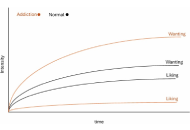
Open Access
Review
Extracellular vesicles in neurological disorders: emerging roles and underlying molecular mechanisms
Mst. Afsana Mimi, Md. Mahmudul Hasan
Published: December 01, 2025 Explor Neurosci. 2025;4:1006118

Open Access
Case Report
Isolated primary CNS lymphoma: a case report and a contemporary review
Ali Msheik ... Abdelnaser Thabet
Published: December 01, 2025 Explor Neurosci. 2025;4:1006117
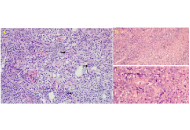
Open Access
Systematic Review
Bi-, tri-, and multi-specific T-cell engager therapies in glioblastoma: a decade of preclinical innovation
Adam H. Lapidus, Malaka Ameratunga
Published: November 28, 2025 Explor Neurosci. 2025;4:1006116
This article belongs to the special issue Current Approaches to Malignant Tumors of the Nervous System
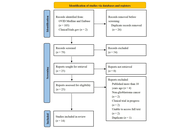
Open Access
Original Article
The association of brain-derived neurotrophic factor Val66Met polymorphism with stroke outcomes: a cross-sectional pilot study
Eduard Tiozzo ... Tatjana Rundek
Published: November 11, 2025 Explor Neurosci. 2025;4:1006115
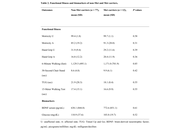
Open Access
Review
Pain management in Guillain-Barré Syndrome: a literature review
Kyla D. Groves ... Kunal Aggarwal
Published: October 28, 2025 Explor Neurosci. 2025;4:1006114

Open Access
Case Report
Cyclic vomiting syndrome (CVS) responsive to single-dose olanzapine: a case report
Sara Sipilä ... Jussi O.T. Sipilä
Published: October 22, 2025 Explor Neurosci. 2025;4:1006113

Open Access
Review
Advancing our understanding of schizophrenia: insights from recent research, emerging therapies, and future directions
Tolutope Adebimpe Oso ... Don Eliseo Lucero-Prisno
Published: October 12, 2025 Explor Neurosci. 2025;4:1006112
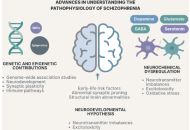
Open Access
Review
Respiratory pathogen to brain degeneration: a review of Chlamydia pneumoniae’s role in Alzheimer’s disease
Atif Salim Khatib ... Daniya Tasnim
Published: September 23, 2025 Explor Neurosci. 2025;4:1006111
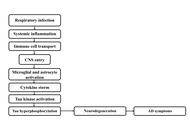
Open Access
Editorial
Editorial: novel therapeutic approaches for the treatment of depression
Ayan Mohamud Yusuf, Dirk M. Hermann
Published: September 16, 2025 Explor Neurosci. 2025;4:1006110
This article belongs to the special issue Novel Therapeutic Approaches for the Treatment of Depression

Open Access
Original Article
Tithonia diversifolia (Hemsl.) extract attenuates cognitive dysfunction, oxidative stress and neuroinflammation in a model of sporadic Alzheimer’s disease induced by streptozotocin
Graziella Martins Guimarães ... Márcia Maria de Souza
Published: September 10, 2025 Explor Neurosci. 2025;4:1006109
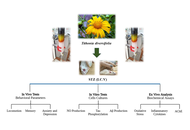
Open Access
Original Article
Behavioral effects of Gabrb2 knockout and an anti-inflammatory herbal formula on aged mice
Manel Barki ... Hong Xue
Published: September 09, 2025 Explor Neurosci. 2025;4:1006108
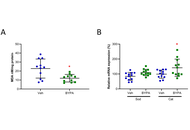
Open Access
Original Article
Impact of neurology staff’s adherence to management guidelines on seizure freedom in epilepsy patients
Rodolfo Cesar Callejas-Rojas ... Ildefonso Rodriguez-Leyva
Published: August 14, 2025 Explor Neurosci. 2025;4:1006107
This article belongs to the special issue Advances in Epilepsy Research
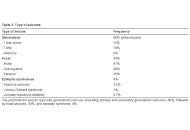
Open Access
Perspective
Most prominent challenges in translational neuroscience and strategic solutions to bridge the gaps: Perspectives from an editorial board interrogation
Dirk M. Hermann ... Jinwei Zhang
Published: August 12, 2025 Explor Neurosci. 2025;4:1006106

Open Access
Review
The psychedelic renaissance: psilocybin, a breakthrough for treatment resistant depression?
Trevor R. Norman
Published: August 07, 2025 Explor Neurosci. 2025;4:1006105
This article belongs to the special issue Novel Therapeutic Approaches for the Treatment of Depression
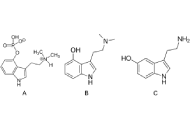
Open Access
Review
Development of Alzheimer’s disease in Down syndrome
Octavio García ... Jesús Antonio Villegas-Piña
Published: August 05, 2025 Explor Neurosci. 2025;4:1006104
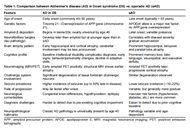
Open Access
Commentary
Neurodegeneration and aging pathways in Mucopolysaccharidosis IIIB
Yorran Hardman Araújo Montenegro
Published: July 28, 2025 Explor Neurosci. 2025;4:1006103
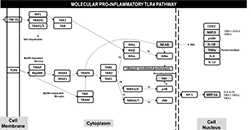
Open Access
Case Report
The genetic profile of a neurofibromatosis type 1 Vietnamese patient with complicated pheochromocytomas and colorectal tumors
Ha Thanh Tran Le ... Ha Hai Nguyen
Published: July 27, 2025 Explor Neurosci. 2025;4:1006102
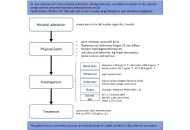
Open Access
Editorial
Editorial: Neuropathic Pain
Giustino Varrassi ... Matteo L.G. Leoni
Published: July 23, 2025 Explor Neurosci. 2025;4:1006101
This article belongs to the special issue Neuropathic Pain

Open Access
Perspective
SVZonChip: a paradigm shift in hydrocephalus research and treatment
Ioannis Angelopoulos
Published: July 23, 2025 Explor Neurosci. 2025;4:1006100
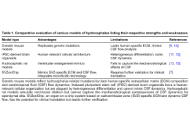
Journal Information
 Previous
Previous